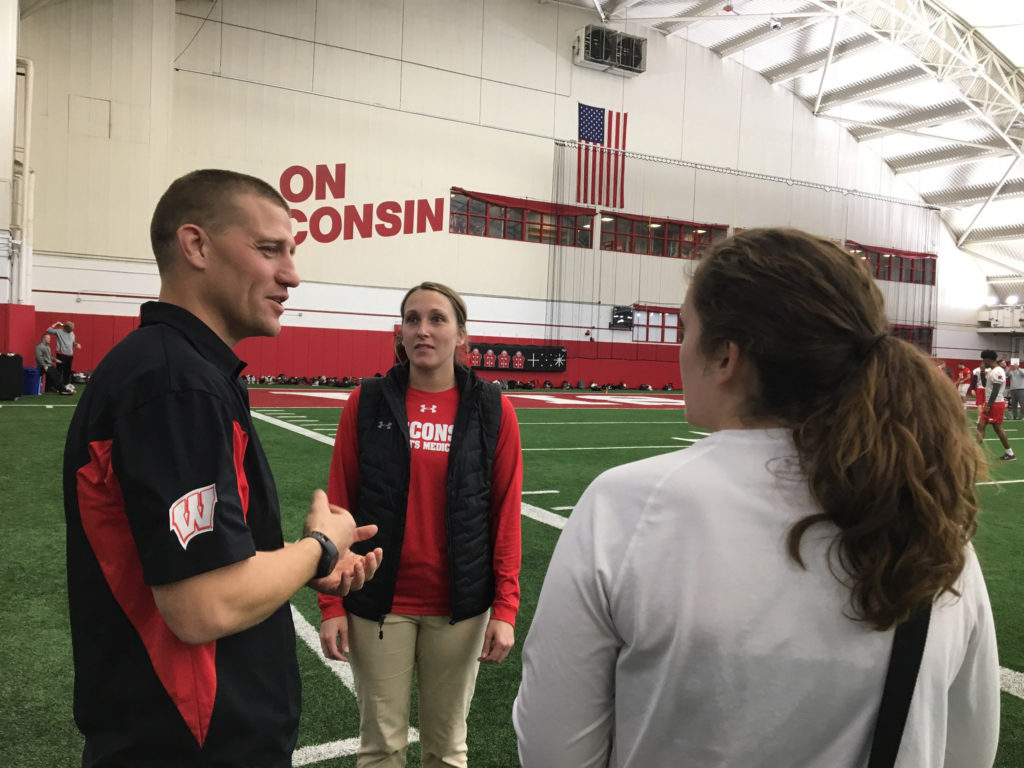News
Access to athletic trainers is important for fast concussion diagnoses

Athletic trainers speak on the sidelines at the University of Wisconsin
Source: Flickr/Capt. Joe Trovato
One of the biggest hurdles in effectively tracking and reducing the effects of concussions is simply getting athletes to report their injuries. Countless studies have shown that a number of factors contribute to how willing athletes are to report their symptoms and changing the fundamental culture within a team can be a slow, difficult process.
However, a new study suggests there may be a simple way to ensure athletes’ injuries are identified, reported, and properly addressed.
According to new findings from researchers at the University of Wisconsin School of Medicine and Public Health, simply increasing access to licensed athletic trainers makes it more certain that young athletes’ injuries will be reported and managed.
This is also important, as licensed trainers can also ensure athletes are not cleared to return to the field before they are fully recovered.
The findings are the result of a survey of Wisconsin’s more than 400 high schools with competitive sports programs. Among the survey were questions about the school’s access to qualified trainers.
Shockingly, only approximately a third of surveyed schools had athletic trainers available during all practices and games like those listed on https://198.177.123.5/. The other schools have only limited or extremely limited access to licensed trainers.
This is particularly troubling, as concussions may be more likely to be missed in sporadic checkups or meetings with trainers. Having a relationship with the athletes allows trainers to more accurately gauge if an athlete is experiencing issues with cognition or memory.
As researcher Tim McGuine explains, “everybody is case-dependent, there are some similarities, but each athlete and each concussion has to be looked at as a different identifiable event and treated as such.”
Using the information gathered through the survey, the team of researchers was able to track the recorded injuries of about 2,400 students across 31 high schools.
The researchers saw students without access to trainers would often take longer to be diagnosed, which can increase the risk of repeated injuries.
On average, those with high levels of access to trainers were more likely to be diagnosed with a concussion within approximately an hour of the injury. However, as access decreased, so did the time it took for the injury to be diagnosed.
Many students in schools with low access to trainers took more than a full day to be diagnosed with a concussion.
While it may seem easy to increase access to licensed trainers within high schools, McGuine notes that finding funding or qualified medical professionals can be difficult.
Among those with low access to trainers, 78% of the schools were in rural areas with limited funding or access to medical centers.
Heidi Gutschow, president of the Wisconsin Athletic Trainers Association, told Wisconsin Public Radio that many schools are limited by their local hospital’s resources.
“There just may not be a clinic or hospital system close enough to provide that person,” she said. “So, you know, funding is a part of it but again, it just may be that there’s not the system available in some areas to be able to provide.”



